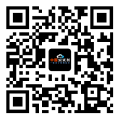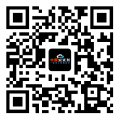详细说明
Purity
>95%, by SDS-PAGE visualized with Silver Staining and quantitative densitometry by Coomassie® Blue Staining.
Endotoxin Level
<0.10 EU per 1 μg of the protein by the LAL method.
Activity
Measured by its binding ability in a functional ELISA. When Recombinant Human LILRA5/CD85f is coated at 2 µg/mL, Recombinant Human Angiopoietin-like Protein 7/ANGPTL7 (Catalog #
) binds with a typical ED 50 of 100-600 ng/mL.Source
Chinese Hamster Ovary cell line, CHO-derived Gly42-Arg268, with a C-terminal 6-His tag
Accession #
N-terminal Sequence
AnalysisGly42
Predicted Molecular Mass
26 kDa
SDS-PAGE
35-50 kDa, reducing conditions
8956-T4 |
| |
Formulation Lyophilized from a 0.2 μm filtered solution in PBS. | ||
Reconstitution Reconstitute at 100 μg/mL in PBS. | ||
Shipping The product is shipped at ambient temperature. Upon receipt, store it immediately at the temperature recommended below. | ||
Stability & Storage: Use a manual defrost freezer and avoid repeated freeze-thaw cycles.
|
Background: LILRA5/CD85f
The leukocyte immunoglobulin-like receptors (LILR) comprise a family of activating and inhibitory type immunoreceptors whose genes are located in the same locus that encodes killer cell Ig-like receptors (KIRs) (1). Human LILRA5, also known as ILT11, LIR-9, and CD85f, consists of a 227 amino acid (aa) extracellular domain (ECD), a 21 aa transmembrane segment, and a 10 aa cytoplasmic tail (2). The ECD contains two Ig-like domains (3), and the transmembrane segment contains a positively charged aspartic acid residue which may mediate its association with the signaling molecule, FcR common gamma chain (4). Alternative splicing generates additional isoforms with a 12 aa deletion within the signal peptide and/or a 27 aa substitution for the C-terminal 61 residues. This substitution encompasses both the transmembrane and cytoplasmic regions. LILRA5 is expressed by monocytes, macrophages, and neutrophils (2, 4). It is found as an approximately 40 kDa molecule on the cell surface, while a soluble 25 kDa form can be released into the synovial fluid of rheumatoid arthritis patients (2, 4). Cross-linking of LILRA5 on monocytes induces the expression of pro-inflammatory cytokines (IL-1 beta, IL-6, TNF-alpha) as well as the anti-inflammatory IL-10 (2, 4). R&D Systems in-house testing indicates that LILRA5 binds to Angiopoietin-like 7, consistent with the demonstrated functional interactions between other members of these protein families (5).
References:
Thomas, R. et al. (2010) Clin. Rev. Allergy Immunol. 38:159.
Borges, L. et al. (2003) Blood 101:1484.
Shiroishi, M. et al. (2006) J. Biol. Chem. 281:19536.
Mitchell, A. et al. (2008) Eur. J. Immunol. 38:3459.
Zheng, J. et al. (2012) Nature 485:656.
Long Name:
Leukocyte Immunoglobulin-like Receptor Subfamily A Member 5
Entrez Gene IDs:
353514 (Human); 232801 (Mouse); 691533 (Rat)
Alternate Names:
CD85 antigen-like family member F; CD85; CD85f antigen; CD85f; ILT11; ILT-11; ILT11CD85f; Immunoglobulin-like transcript 11; leukocyte Ig-like receptor 9; Leukocyte immunoglobulin-like receptor 9; leukocyte immunoglobulin-like receptor subfamily A member 5 soluble; leukocyte immunoglobulin-like receptor subfamily A member 5; leukocyte immunoglobulin-like receptor, subfamily A (with TM domain), member 5; leukocyte immunoglobulin-like receptor, subfamily B (with TM and ITIM domains); LILRA5; LILRB7; LIR9; LIR-9; LIR9immunoglobulin-like transcript 11 protein; member 7










 粤公网安备44196802000105号
粤公网安备44196802000105号